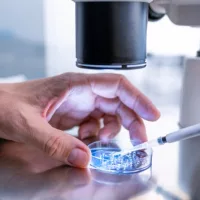
 Robin Marchant/Getty Images for Cantor Fitzgerald(NEW YORK) — Wendy Williams revealed another hurdle in her health struggle on Monday, announcing on her talk show that she has lymphedema.
Robin Marchant/Getty Images for Cantor Fitzgerald(NEW YORK) — Wendy Williams revealed another hurdle in her health struggle on Monday, announcing on her talk show that she has lymphedema.
The Wendy Williams Show host revealed the diagnosis while talking about her summer vacation.
“Lymphedema, by the way, I’ve been diagnosed,” said Williams, 54. “It’s not going to kill me, but I do have a machine — and how dare you talk about the swelling of it all.”
“I’ve got it under control and if [the swelling in] my feet and lower things never go all the way down, at least I have this machine,” she said, likely referring to a compression device. “I sit for 45 minutes a day. And believe me, it’s the best party entertainer ever. Everybody who comes over wants to do this.”
Swelling in the legs and arms is a symptom of lymphedema, the build-up of fluid when the lymph system is damaged or blocked, according to the National Cancer Institute (NCI), a division of the National Institutes of Health.
Williams took time off from her show earlier this year after announcing she has Graves’ disease, an autoimmune disorder affecting her thyroid. She has also been open about her struggles with substance abuse, including a stay at a sober house this spring.
Williams, also in the midst of a high-profile divorce, did not share details about the cause of her lymphedema diagnosis or when she was diagnosed.
Here are some questions answered about lymphedema to help understand the condition:
What causes lymphedema?
There are two types of lymphedema — primary and secondary — which have different causes.
Primary lymphedema is caused by the abnormal development of the lymphatic system and is hereditary, according to NCI. Secondary lymphedema is caused by damage to the lymphatic system, whether through surgery to treat cancer, radiation or infection. The more lymph nodes that are affected, the greater the risk of lymphedema.
In addition to the removal or irradiation of lymph nodes, other risk factors for lymphedema include being overweight or obese, skin healing slowly after surgery and tumors that affect or block lymph nodes or vessels, according to NCI.
What are the warning signs?
The most recognizable signs of lymphedema are swelling of the arms or legs which brings a feeling of heaviness or tightness.
Typically, only one arm or leg is affected and swelling usually begins in the foot and moves up, according to Harvard Medical School.
Can lymphedema be prevented?
The risk of secondary lymphedema can be reduced by taking extra care of the arm or leg at risk, according to Harvard Medical School.
Experts advise taking precautions like avoiding heavy lifting with the arm at risk, elevating the arm or leg(s), wearing a compression stocking and avoiding having injections, IV lines or blood drawn on the arm at risk.
How is lymphedema treated?
Lymphedema has no cure but can be managed. Treatment for lymphedema is aimed at controlling the swelling it causes and preventing any other problems.
Lymphedema is typically treated through non-drug therapies like careful skin care to prevent infection, bandaging, massage therapy and physical therapy, according to NCI.
Copyright © 2019, ABC Radio. All rights reserved.















